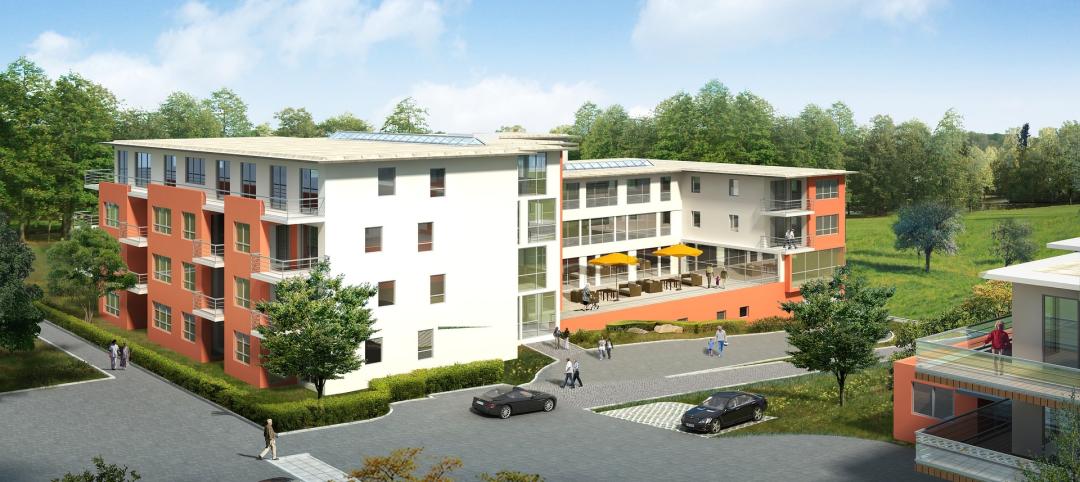Evolving into more comprehensive design-build services was the driver behind CannonDesign’s recent merger with gkkworks, an integrated planning, design, and construction firm.
Founded in 1991, gkkworks employs 120 people in its offices in Irvine, Pasadena, and San Diego, Calif.; Denver; and Pune, India. (CannonDesign has an office in Mumbai.) Its annual revenue ranges from $50 million to $60 million.
Praful Kulkarni, president and CEO of gkkworks, says his goal has been to “create a firm with multiple professionals to customize the design process.” He notes that his company’s progressive design-build delivery model is promulgated on the belief that “architecture and construction are inseparable.”
Kulkarni’s new title at Cannon Design is director of integrated services, focused on advancing the combined firm’s design and construction capabilities.

Praful Kulkurni is now Cannon Design's director of intergated services, focused on the firm's design and construction capabilities. Image: courtesy of Cannon Design
Last year, Fast Company magazine recognized CannonDesign as one of the 10 most innovative architectural firms in the world. CannonDesign became acquainted with gkkworks through a “client connection,” says Brad Lukanic, AIA, LEED AP, CannonDesign’s growth-minded CEO.
Merging with gkkworks expands CannonDesign’s west-coast partnerships and moves the firm into the hospitality sector. Lukanic further explains the rationale behind this merger by stating “we’re finding that the industry is really hungry for alternative delivery methods. When there’s a single source of delivery, fewer mistakes are made.”
Cannon Design got into integrated modular design two years ago. Based on post-occupancy studies that CannonDesign has conducted on those subsequent projects, its delivery model is reducing delivery times by 28%, lowering costs by 20%, and reducing material waste by 30%. Kulkarni observes that these results “rest on involving the construction company at the point of selection.”

Deb Sheehan, Cannon Design's Executive Director-Firmwide Strategies, is looking forward to her company working earlier with subs and suppliers. Image: Cannon Design
Merging with gkkworks extends CannonDesign’s delivery reach to the supply chain, says Deb Sheehan, CannonDesign’s Executive Director-Firmwide Strategies. The company is already collaborating with GCs, and has started to include large subcontractors such as Hill Mechanical in early design discussions. Sheehan speaks enthusiastically about working sooner with suppliers and subcontractors to get costs down.
When asked why more firms should go the IDP route, Kulkarni cites a U.S. Supreme Court ruling that, he says, set “an impossibly high bar” for the accuracy of design drawings. In any disputes among building team members or with clients, that ruling “became a defensive position.” But when design and construction are integrated, “you no longer have these disputes.”

Since joining Cannon Design in 2016, CEO Brad Lukanic has been acquisition minded. Image: Cannon Design
“I believe our firm can play a vital role in a unified approach, as clients seek integrated solutions that link a project’s design and delivery phases,” says Lukanic. “By breaking traditional boundaries, our firm seeks to delivery every project aspect—from shaping the design experience to final construction.”
Its merger with gkkworks brings to 24 the number of offices Cannon Design operates. Over the next several months, Cannon Design and gkkworks will be combining their respective operations, “especially in California,” says Lukanic.
Related Stories
Adaptive Reuse | Sep 12, 2024
White paper on office-to-residential conversions released by IAPMO
IAPMO has published a new white paper titled “Adaptive Reuse: Converting Offices to Multi-Residential Family,” a comprehensive analysis of addressing housing shortages through the conversion of office spaces into residential units.
Mixed-Use | Sep 10, 2024
Centennial Yards, a $5 billion mixed-use development in downtown Atlanta, tops out its first residential tower
Centennial Yards Company has topped out The Mitchell, the first residential tower of Centennial Yards, a $5 billion mixed-use development in downtown Atlanta. Construction of the apartment building is expected to be complete by the middle of next year, with first move-ins slated for summer 2025.
Healthcare Facilities | Sep 9, 2024
Exploring the cutting edge of neuroscience facility design
BWBR Communications Specialist Amanda Fisher shares the unique considerations and challenges of designing neuroscience facilities.
Office Buildings | Sep 6, 2024
Fact sheet outlines benefits, challenges of thermal energy storage for commercial buildings
A U.S. Dept. of Energy document discusses the benefits and challenges of thermal energy storage for commercial buildings. The document explains how the various types of thermal energy storage technologies work, where their installation is most beneficial, and some practical considerations around installations.
Office Buildings | Sep 5, 2024
Office space downsizing trend appears to be past peak
The office downsizing trend may be past its peak, according to a CBRE survey of 225 companies with offices in the U.S., Canada, and Latin America. Just 37% of companies plan to shrink their office space this year compared to 57% last year, the survey found.
University Buildings | Sep 4, 2024
UC San Diego’s new Multidisciplinary Life Sciences Building will support research and teaching in both health and biological sciences
The University of California San Diego has approved plans for a new Multidisciplinary Life Sciences Building, with construction starting this fall. The 200,000-sf, six-level facility will be the first building on the UC San Diego campus to bridge health science research with biological science research and teaching.
Codes and Standards | Sep 3, 2024
Atlanta aims to crack down on blighted properties with new tax
A new Atlanta law is intended to crack down on absentee landlords including commercial property owners and clean up neglected properties. The “Blight Tax” allows city officials to put levies on blighted property owners up to 25 times higher than current millage rates.
Resiliency | Sep 3, 2024
Phius introduces retrofit standard for more resilient buildings
Phius recently released, REVIVE 2024, a retrofit standard for more resilient buildings. The standard focuses on resilience against grid outages by ensuring structures remain habitable for at least a week during extreme weather events.
Construction Costs | Sep 2, 2024
Construction material decreases level out, but some increases are expected to continue for the balance Q3 2024
The Q3 2024 Quarterly Construction Insights Report from Gordian examines the numerous variables that influence material pricing, including geography, global events and commodity volatility. Gordian and subject matter experts examine fluctuations in costs, their likely causes, and offer predictions about where pricing is likely to go from here. Here is a sampling of the report’s contents.
Adaptive Reuse | Aug 29, 2024
More than 1.2 billion sf of office space have strong potential for residential conversion
More than 1.2 billion sf of U.S. office space—14.8% of the nation’s total—have strong potential for conversion to residential use, according to real estate software and services firm Yardi. Yardi’s new Conversion Feasibility Index scores office buildings on their suitability for multifamily conversion.

















